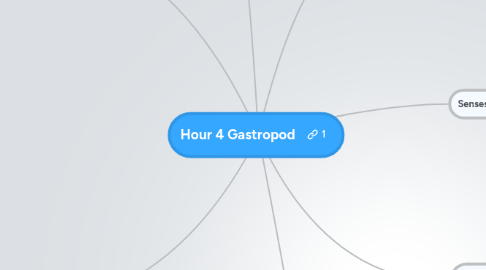Hour 4 Gastropod
by Karla Lockman

1. Feeding/Digestion
1.1. Gastropods feed by using a mouth to eat and swallow their food and then the food goes through the glands to digest their food which goes through the intestine and out the anus.
2. Senses/Response
2.1. Gastropods are small organism so they have good sense, some hide in shells or they emit a chemical or have something to protect them from danger. Gastrods often have Rhinospores. Gastropods usually have two of them at the end of their body. They are used for smelling food. Gastropods often also have stinging cells to protect them from preditors.
3. Movement
3.1. Gastropods have one large muscular organ called their foot. They use a rippling motion to move forward and release a slim trail that helps them move more easily.
4. Respiration
4.1. Gastropods are amphibious and breath through gills, gastropods may also have a special hole for respirating called a Pneumostome. Gastropods have internal organs such as lungs to help them breath.
5. Anatomy
5.1. A Gastropod has sensory organs. These organs include olfactory organs, eyes, statocysts, and mechanoreceptors. Gastropods cannot hear. With land gastropods, the olfactory organs are the most important sensory organ. Gastropods have simple visual organs, they can only distinguish light and the dark. Vision is not an important sensory organ.
5.2. Distinguished by an anatomical process known as torsion. The visceral mass of the animal rotates 180 degrees.
5.3. Most Gastropods are surrounded by a shell, most are usually a one piece shell, either coiled or spiraled. The coiled shell usually opens on the right side. The land slug is the only gastropod that has a reduced or absent shell.
5.4. The radula of a Gastropod is adapted to the food that the species eats. Gastropods use their radula to grab their food. Marine Gastropods are burrowers, and have a siphon that comes out from the mantle edge. Sometimes the Gastropod has a siphonal canal to go with this structure. A siphon enables the animal to draw water into their mantle cavity and over the gill. They use the siphon to taste the water and detect prey.
5.5. A Gastropod has a respiratory system where they breath with a gill. They also have a circulatory system which is open and transport hemolymph. With their excretory system, they produce either ammonia or uric acid as a waste product. With their excretory system they play an important role in maintaining water balance. Some Gastropods include pericardial glands and digestive glands opening in the stomach. Courtship is part of their mating behavior, including Helicidae in some. In land snails, they use love darts. With marine Gastropods they are separate sexes. Most land gastropods are hermaphrodites.
6. Reproduction/Life Cycle
6.1. Gastropods can reproduce sexually and asexually. Many are hermaphroditic, having both sperm and eggs. Gastropods go through several stages to become an adult Gastropods.
7. Circulation
7.1. Nudibranches have an open circulation system. This means that are lacking a true vascular tissue and have a two chambered heart. Not all blood will be contained in blood vessels. Some will travel through the body tissue. By Kaitlyn.
7.2. Nudibranches have a heart that works just like humans hearts do. Creating blood flow throughout the body. The heart is located Anterior. This means it is close to the head. By: Kaitlyn Wendolek
7.3. The spaces were the blood moves through the body tissue is called Sinuses. The Sinuses leads to the gills and then back to the heart. By Kailtyn
7.4. Hemocoel is is the cavity, where the blood called Hemolymph is pupped through. By: Kaitlyn


